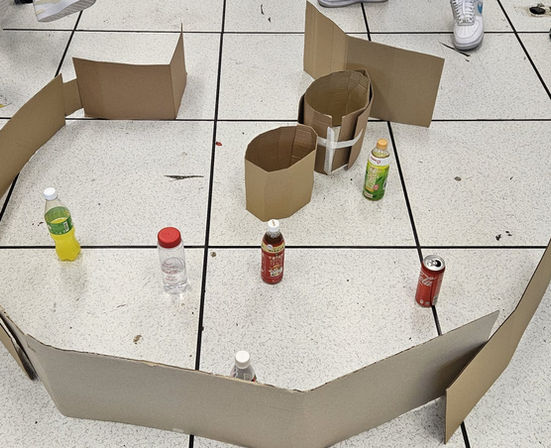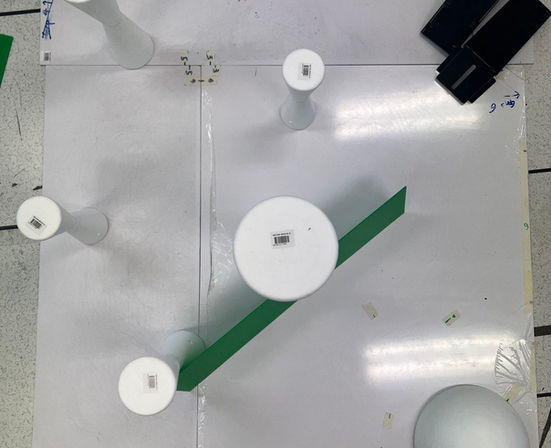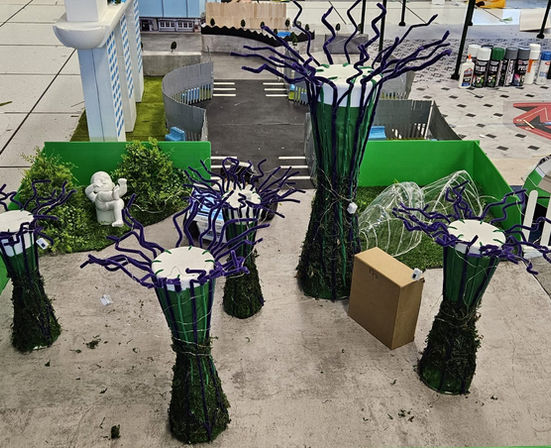Competitive Arena Challenge
This project occurred while I was studying at the Singapore Institute of Technology (SIT), Year 1 Trimester 3, Systems Engineering Project 1 module RSE2107A in 2024.
The project supervisors are Dr. Liew Pak San, Dr. Yuan Qilong, Dr. Yohanes Daud and Mr. Gary Lee Ngee Howe.
The Singapore Institute of Technology and ROS tutorial provides all online tutorials and learning content.
The LIMO robot was also provided by SIT.
A budget was given by SIT to purchase materials for the arena.
Project Overview
The project aims to utilize the LIMO robot from Agilex Robotics to navigate the arena of all the teams. The team has chosen "Gardens by the Bay" as the theme for the arena.
The arena's main objective is to make it challenging to challenge the other team's LIMO and ensure that our LIMO can navigate efficiently.
The arena challenge will be judged based on the LIMO's ability to navigate through three randomly selected areas in the fastest time possible without colliding with obstacles. Throughout this project, the team must also apply a system approach to develop an innovative robotic system within the context of a competitive arena challenge.
Hard Skills used:
-
ROS1
-
Arduino Programming
-
Python Programming
-
System Engineering (System Approach)
Soft Skills used:
-
Decision-Making
-
Communication
-
Teamwork
Garden By the Bay Arena
Attractions to depict Garden by the Bay
-
Supertrees
-
Flower Dome
-
Cloud Dome
-
Baby Sculpture "Planet"
Materials used:
-
Base of Arena: PVC foam board, wallpaper and fake grass
-
Supertrees: Styrofoam, pipe cleaners and green graft paper
-
Domes: white metal wire and plastic sheet
-
Gantry: Corrugated Plastic board, Servo motor, Arduino board and two IR Obstacle Avoidance Sensors
-
Wall: Corrugated Plastic board

To add more details we added fake grass and plants to add more aesthetic to the arena.
Arena
We use recyclable materials to make a prototype of our layout to try out with the LIMO robot. From there, we were able to find faults with our design and improve on it until we came up with a layout that met the requirements, which was to create an arena challenging for other team's LIMO while ensuring that our LIMO robot could navigate through efficiently.
After testing and analyzing each layout we decided that having twist and turns for the LIMO to navigate through would be the best way to challenge the other team's LIMO robot. (Third layout)
After the layout was decided, we discussed what material to get to create the obstacles. When picking materials, we thought about stability, availability, and ease of use of the materials to make the arena. We prioritize buying the material to make the outline of the third layout design so that we have more time to do more tests with the LIMO robot.
LIMO Robot
We first used Gmapping, as it was most familiar. Through changing some parameters, such as the local costmap inflation layer, goal_distance_bias, which affects how much the robot aligns itself to the goal, and path_distance_bias, which affects how much the robot will follow the global planned path, LIMO robot footprint. Through these changes, the LIMO robot was able to navigate through the arena.
However, it would occasionally fail due to certain terrains making it slip, which affected the navigation.
Thus, we changed to RTAB-map (Real-Time Appearance-Based Mapping), as it uses a camera to collect visual and depth information for more accurate mapping and localization. This solved the issue of slipping and improved navigation through extremely narrow pathways.














